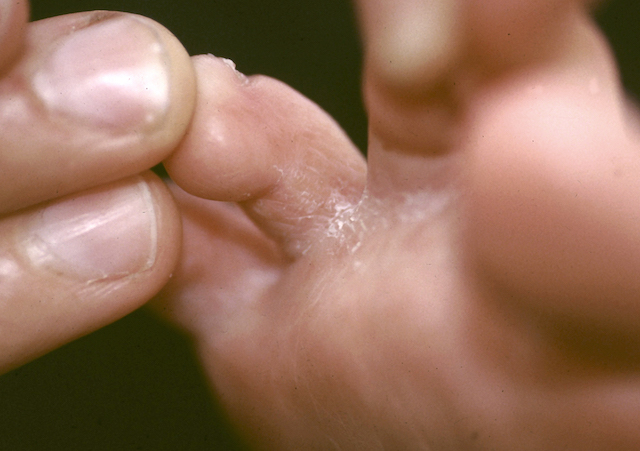Imágenes

Athlete's Foot between Toes
Athlete's foot is often located between the toes. The skin is dry and cracked.
Source: Self Care Decisions, LLC
From the Dr. James Fitzpatrick Collection of Pediatric Dermatology. Used with permission.

Athlete's Foot
This shows the bottom of a foot with athlete's foot. The skin is dry and cracked.
Source: Self Care Decisions, LLC
From the Dr. James Fitzpatrick Collection of Pediatric Dermatology. Used with permission.